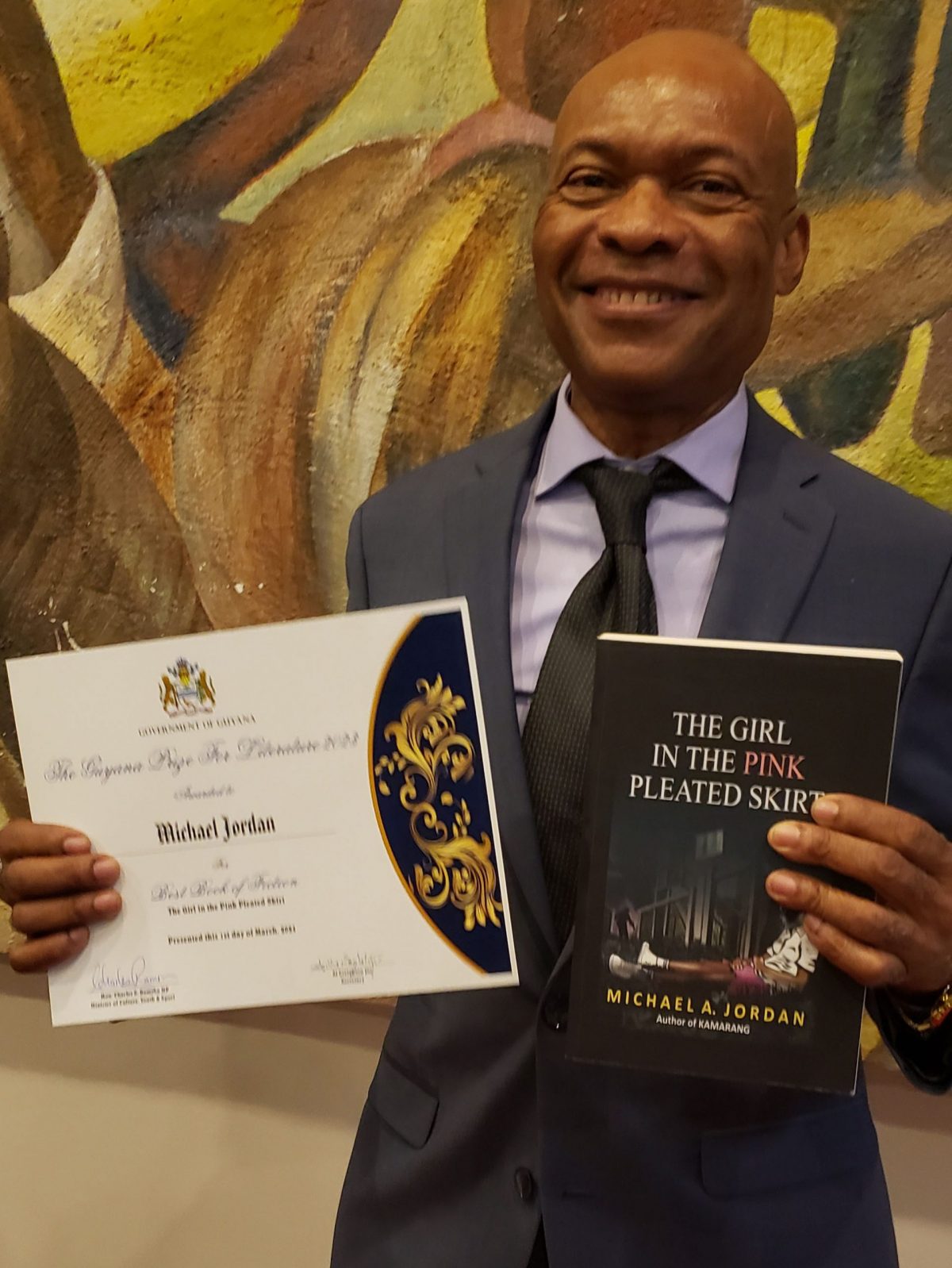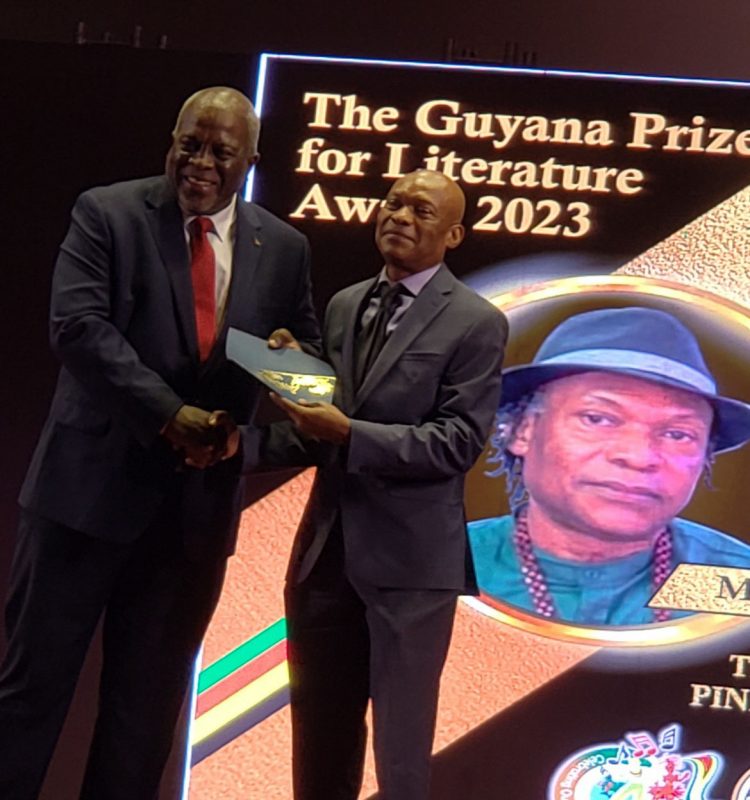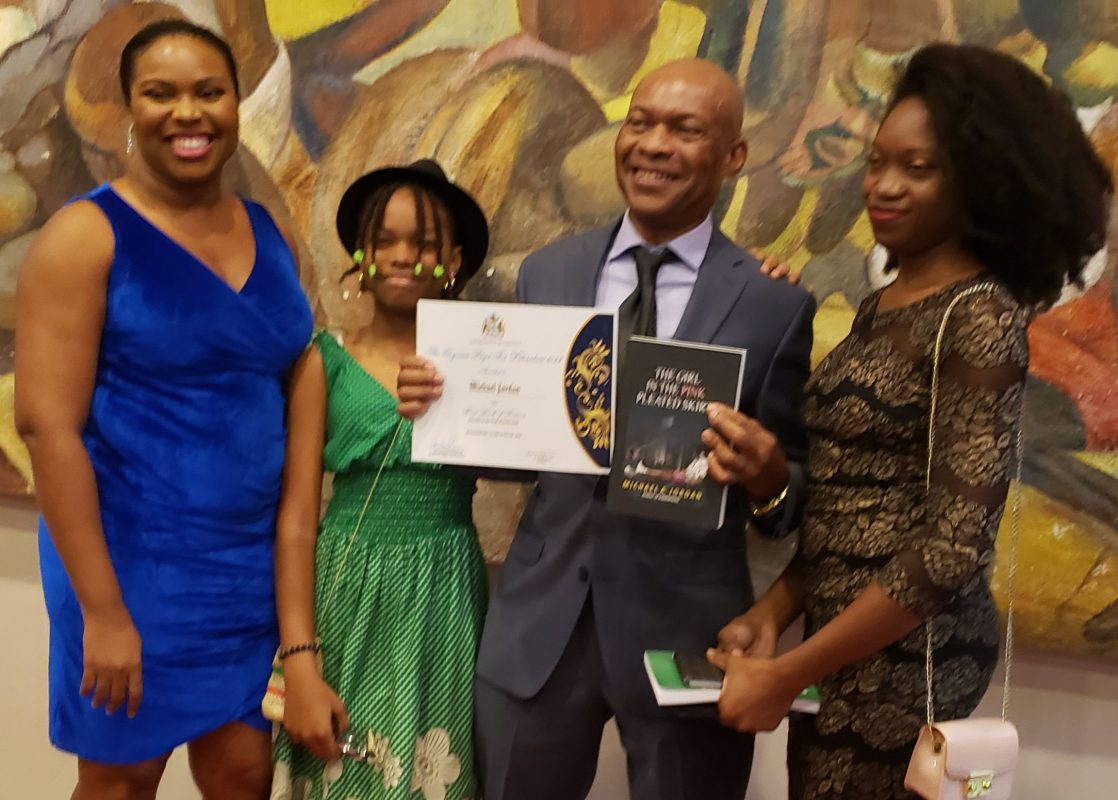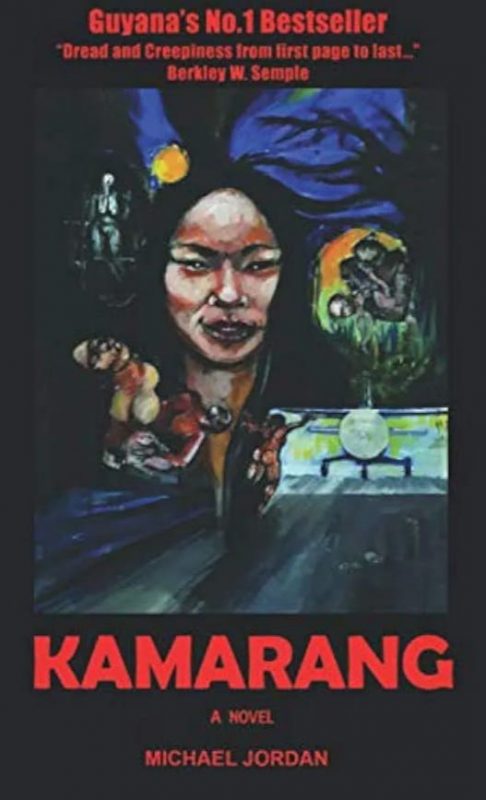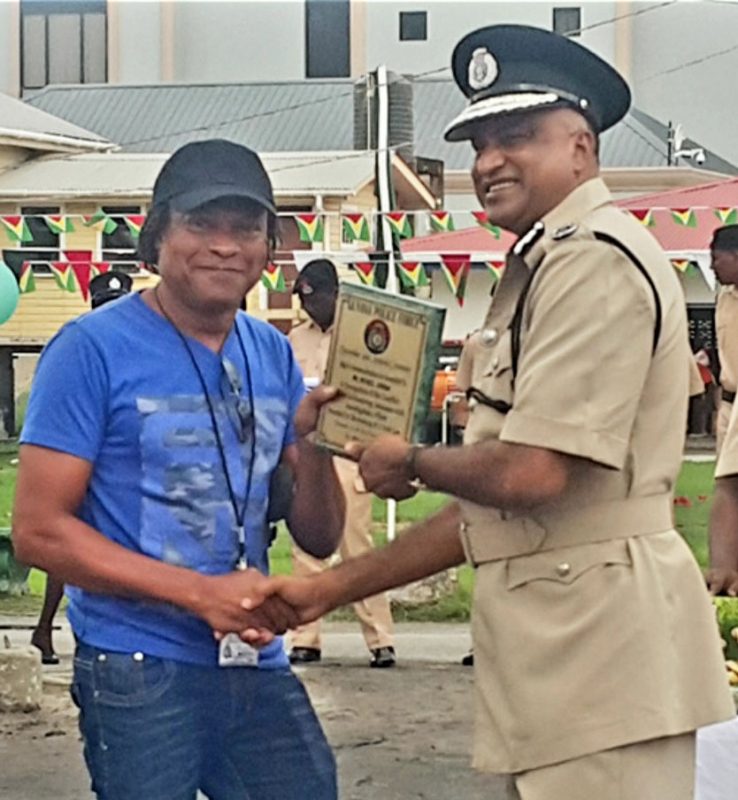The book that topped the 2023 Guyana Prize for Literature Fiction award is the culmination of journalist and author Michael Jordan thinking for 47 years about writing the story of a 13-year-old schoolgirl, Ann Stewart, who was murdered in 1976, and whose body was placed in a sitting position in an alley in Tucville. The prime suspect was never charged.
“This is 47 years of agony, of thinking about writing this story because of what occurred and the impact it had on me as an 18-year-old living in Tucville at the time. It was written from the heart with a lot of emotional content. It is something I know a lot about,” Jordan, 64, told Stabroek Weekend.
The novel, Jordan’s second, is a tribute to Stewart who becomes the character Sandra Stephens in the book, “The Girl in the Pink Pleated Skirt”. Jordan’s first, “Kamarang”, was shortlisted for the 2022 Guyana Prize.
“Crime and mystery are hardly ever seen as literary stuff,” he said, “and winning the Guyana Prize with a genre crime and mystery novel, is an indescribable fantastic feeling.”
Of Stewart’s murder, Jordan recalled returning home one afternoon and seeing on the front page of the tabloid, The Citizen, a picture of a dead girl with a broken neck whose body was fixed neatly and propped up in an alley.
“It was a shocking image. It was more shocking that I knew the girl from seeing her in her pink Alleyne’s High School uniform standing by Turning Point Bridge waiting for the big yellow buses by herself, neat, quiet and pleasant on a school day. Another shock was that the only suspect was this chubby, harmless-looking guy who used to play table tennis by us. We had a little club where boys from the neighbourhood came and played table tennis. Sometimes he sat by the bridge by himself looking sulky and isolated. I’d never spoken to him again until many, many years later when I interviewed him about the case,” Jordan said.
The suspect, called ‘Fat Man’, no longer lives in the area. According to Jordan, the detective who covered the case said the murder definitely pointed to him. The suspect had told the detective that the night of murder was his birthday and as the girl was passing he invited her for a drink. He was the last person known to have seen her alive.
It bothered Jordan that the case was unsolved and Stewart’s story was forgotten as though she never existed. “One of the things I harped on in the novel is the way we quickly forget,” he noted.
“I never realised how badly her demise affected me until I started to write ‘The Girl in the Pink Pleated Skirt’. I knew I was going to write her story but I needed the time, the skill to write and research and I needed things to happen in my life to be able to fill in the blanks. The novel is also based on other cases I’ve covered. It’s not a straight-forward depiction of the actual event because the creative mind takes over and it takes you wherever it goes,” he said.
To write the story, which is based between December 1978 and pre-general elections 1992, he returned to Tucville and while recreating it Jordan asked himself many questions like what if ‘Fat Man’ was not the perpetrator. What if it was a group? What if it were close friends/acquaintances or other people he knew?
He questioned himself, he said, because whenever he brought up the subject in Tucville with his friends some were evasive and he felt they knew the perpetrator/s. Meanwhile, some people had moved out of the area, many had died so there were few people to question.
“I walked the areas that led to the alley, talked to people who kept asking me, ‘What yuh want dis story fuh? Was yuh girlfriend? Yuh did like she?’ not understanding that for me the death was a mystery, an intriguing and an upsetting one, that must be solved,” he said.
Throughout the years, Jordan said, he could not let go of the story. “I wrote with a copy of the photo of the girl in the alley by my computer. I had to immerse myself, to feel the anger, the puzzlement,” he related.
The protagonist in the story, reporter Daniel McAllister, Jordan said, “is a lot of me, a lot of my challenges as a reporter on the beat. I’ve been in the journalistic profession for at least 30 years. Writing and mystery cases have always been my interest.”
In the book Daniel was always intrigued with mystery and crime with a memory for specific things, like murder and unsolved cases. Daniel follows the murder of Sandra Stephens, his little sister’s friend. “Like me, he had seen the photograph of this girl in the book,” Jordan said. “Thirteen years have passed and Daniel is a reporter covering the crime beat. For some reasons, Sandra Stephens’ murder came up. He found things that were troubling and amounted to a cover up of other murders of women because of an influential suspect. He endangers himself to solve this case.”
When Jordan joined the media he was thrown into the police and hospital beats. “As a rookie you get your licks and I used to get bad licks from Stabroek News. But what I wanted to do and what I saw lacking, was follow-up, investigative journalism. If someone is killed today, they’re forgotten in a few days. In particular, I saw that hole in crime reporting. I saw that glaringly in the Monica Reece case,” he said.
He was freelancing when Reece was murdered but he did not think it was followed up as it should have been initially.
“I questioned how this gruesome death was being swept under the carpet. I took it on myself to walk Main Street, talked to potential eyewitnesses, went to CID headquarters, saw the pickup from which Monica’s body was dumped and spoke with her family members. After that everyone followed the story. We did some bad things in terms of reporting but we’ve kept the story alive. I still dream about Monica and sometimes tracking her killer. According to the police, the killer is known but they lack evidence to bring charges. He is walking among us as are many others mentioned in my book,” Jordan said.
“The Girl in the Pink Pleated Skirt” does not deal with Ann Stewart’s case alone. He wrote about Reece’s case but her name is not mentioned. Also mentioned were the bodies of two unidentified women that were found in the canal alongside Caneview Avenue within a two-week period. The book also refers to three girls, including Beatrice Bobb and a girl called Joy who lived in a shack by the then JP Santos on Water Street, who were murdered. Bobb was strangled and her body was dumped on the North Ruimveldt playground. The body of the third girl was found in the Lamaha Canal area. Reece lived in that area for a brief period.
In real life, in the line of journalism, Jordan was threatened on several occasions. “You brush it off. The cases I’m very wary of and all of us are, are the drug-related matters. You may be killed and no one will remember you. But like I said, the reporter in the novel is like me. He thinks about the danger after the event because you want to beat the competition and you want to solve the case,” he said.
One of the reasons he follows up on these cases, he said, is because families grieve and need closure. “Journalism for me is more than excitement or covering a story. It is finding and exposing the perpetrator. It is giving the victim a chance to rest in peace. Ann Stewart is not resting in peace,” he added.
In 2016, the Guyana Police Force gave Jordan an award for assisting in solving a cold case.
Jordan has worked for numerous media outlets, including the Guyana Chronicle, Stabroek News, Kaieteur News, Big Smith News Watch and Guyana Times.
The first newspaper he worked with was the tabloid, Extra News. “It was there I wrote my first murder story. It was about a minibus driver who was found dead in his bus on Mandela Avenue. It was picked up by Stabroek News. He was going around with a drug dealer’s girlfriend and had been threatened. From evidence, the pathologist suggested the driver was forced off the road and he crashed and died. After Stabroek News picked up the story, the crime chief announced there was going to be an inquest into the man’s death. You know you’re on the right track when your story is picked up even though you still lack writing and investigative skills,” Jordan said.
One of the other things Jordan did and it is reflected in the book was going into the streets to mingle with the street people including drug addicts and petty thieves. “That is something I find we are a little queasy about as journalists. We don’t want to be seen in certain areas. These people give you stories. Daniel goes into the streets to find Stephens’ killer.”
Mentoring
“I wrote this story because I had to write it and get it out. It wasn’t written for the Guyana Prize but I felt if I wrote it well, I might have a chance of winning. When I was shortlisted I wasn’t carried away. When I read the summaries of the other novels shortlisted, I knew I was in a tough race,” Jordan said.
After being shortlisted and then being a finalist, Jordan said, he did not sleep for days. “I dreamt all sorts of nonsense. I wanted to win badly. Winning is an acknowledgement that I am a good writer. I want to continue to write books that people want to read,” he added.
According to the judges’ report, “The first person narrator of this novel is emotionally and mentally invested. He combines the art of investigative journalism with the skills of a passionate amateur detective to unravel the political and police corruption that had caused the official investigations of the horrific murders of young Guyanese girls to go cold.”
Jordan’s major challenge was sitting down to write and rewrite. When he decided to write the story, he saw the holes in it. “I had to convince myself to write in spite of all the what-ifs. I had to research because I write about things I care about. Some days it was magical. It just flowed and I was in that world more than in this one. It was a beautiful feeling but it was scary too. There were times when I was stuck. For instance, I wrote the ending of my novel about six times,” he revealed.
His main mentor is Harold Bascom, a multiple Guyana Prize winner and winner of this year’s Guyana Prize for Literature – Drama for his play “Unfounded”.
Jordan met Bascom years ago when he was trying to write short stories and Bascom advised him to write about things Guyanese, which he does. “One of the things I learnt from him was discipline which is key to creating. You can have the talent but if you do not have the discipline you cannot reach the goal. Bascom and I critique our work very frankly. You don’t need a friend who will tell you this is perfect when it isn’t,” he noted.
Jordan grew up in a house crammed with books including volumes of Reader’s Digest. His mother was a teacher and his father, a postmaster; both were avid readers.
“There was a particular Reader’s Digest based on crimes in America, titled ‘Crime, Mystery and Detection’ that I read and reread to the point where I could tell you the title of all the stories and quote from some of them,” he said.
Going forward
Jordan has no more hardcopies of Kamarang but they are available on Amazon. Getting books independently published in Guyana, he said, is challenging.
“At present my Guyana Prize winning novel is only available on Amazon. I’m seeking sponsors to help print with a reputable printer. We have no printing companies in Guyana who can print books to international standards.”
He has approached a Trinidadian printer who has given him quotations. “Austin’s Book Store has been very helpful in promoting and selling my book. Right now I am giving writing creatively a rest until I get my books printed and out there,” he said.
At present he is working on some mini-documentaries on local unsolved cases for Big Smith News Watch similar to the Murder Mysteries series he did in Kaieteur News.
“One of the things people who have read ‘The Girl in the Pink Pleated Skirt’ have asked me to do is to make Daniel McAllister a series character. I think it’s a brilliant idea so you haven’t seen the last of the foolhardy young reporter,” he revealed.
While he was writing “Kamarang” over the years, the crime wave of the late 1990s and 2000s, he said, “messed up my creative writing. I was on it day in and day out. I became frustrated and angry because I was losing that part of me. I typed on my computer at work, ‘I am a fiction writer.’ I have it on my room door too. That kind of kept me grounded.”
When he wrote “Kamarang” he was still in the media but he wrote “The Girl in the Pink Pleated Skirt” while freelancing as an independent journalist. “That is also challenging because while writing a novel I had to earn an income. The novel consumes you. It takes over a big chunk of your time,” he noted.
